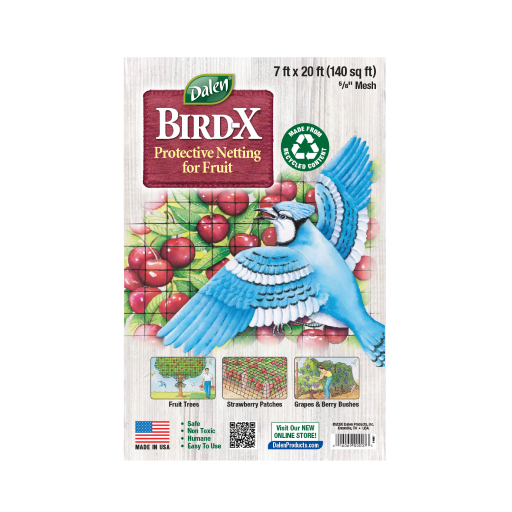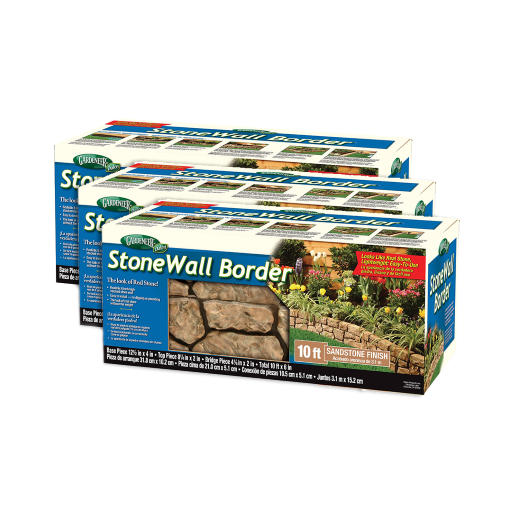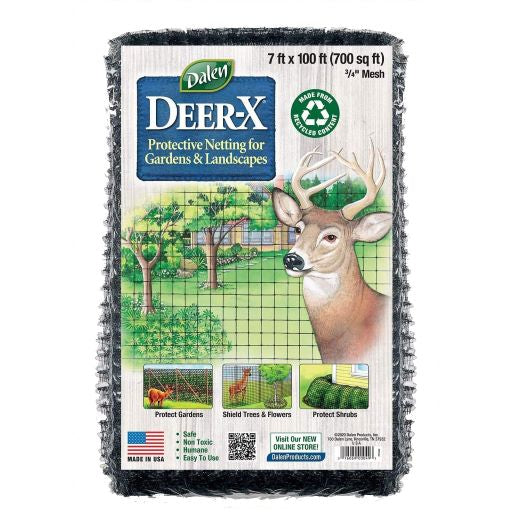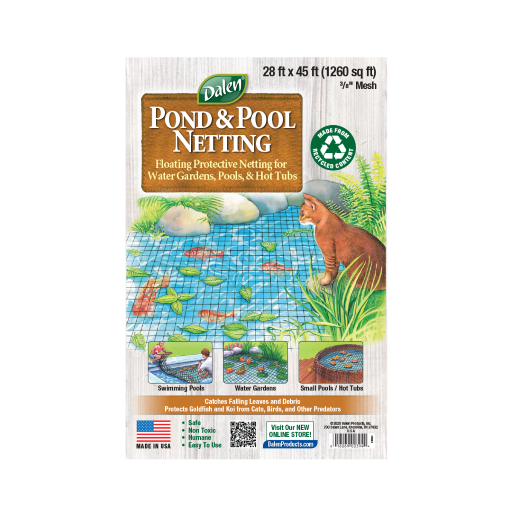So you’ve managed to get through spring sowing, summer cultivating, and fall harvest. Time to rest easy? Not quite yet. Those cool weather crops you planted in the spring often really have two growing seasons, spring and fall, and can sometimes even be coaxed into growing through the winter. But whether you’re planting new crops or just trying to preserve your perennials, your plants are still vulnerable to all the trials and tribulations of winter. Frost, snow, hungry animals, salt splatter, extreme wind, and cold can all take a heavy toll on your yard and garden.
Dalen is here to help protect the garden that you worked so hard for the rest of the year. With a few versatile items and a bit of time, you can successfully winter-proof your yard to mitigate any possible damage. We’ll talk about some of the problems your lawn and garden might face in the winter, and how you can help.
Autumn Planting
While we think of most planting and growing happening in spring and summer, and harvesting happening in the fall, there’s more to it than that. Plenty of wonderful cool-weather crops can be planted in the summer and harvested throughout the fall and into winter, especially if you use some protective measures. In fact, many of the vegetables that we take for granted on the grocery store shelf actually come into season in the late fall, and taste their best when grown in colder temperatures. This is because for many cooler-weather crops, when temperatures dip to near-freezing temperatures, they convert stored starch into sugars to prevent their cells from freezing. The sugar inside the cells acts like antifreeze in a car, and it prevents cell damage from the cold.
Besides sweet and tender fall-planted root vegetables like carrots, parsnips, beets, and the like; cold-hardy leafy greens and cruciferous vegetables like kale, spinach, broccoli, kohlrabi, and Brussel sprouts are all delicious and nutritious cool-weather crops. Using a floating row cover, like Dalen’s Harvest Guard, can help prevent delicate foliage from freezing and extend the growing season into winter. However, there are lots of other reasons for cool-weather protection, and lots of other options to use for it.
Let’s talk about protection
Burlap is one of the garden’s unsung heroes. Like twine, it’s a product that doesn’t lend itself to fancy reinventions or special packaging. But it’s a garden staple worth mentioning when it comes to cold protection. Burlap is made from jute, the same material that’s the basis of most garden twine. It’s an extremely strong natural material, because it contains both cellulose and lignin. Lignin is what comprises the “woody” part of plants; it’s a rigid material that’s resistant to rot. Cellulose is an abundantly found organic polymer, and is the primary material (90%) in cotton. So burlap combines the flexible fiber properties of cotton with the durability and sturdiness of wood. Since it’s biodegradable, you don’t have to worry about its environmental impact either.
These great properties make burlap an eco-friendly choice for bundling up your plants. Potted plants in particular can benefit from being covered with an insulating wrapping, since a pot of soil above the ground will get cold and even freeze before the ground itself does. This is because the thermal mass of the earth stores lots of the sun’s energy and remains at a slightly warmer, more constant temperature. A wrapping of burlap will keep those pots nice and snug once temperatures start to drop.
Unfortunately, cold alone isn’t the only problem your plants have to contend with. As winter snows descend upon us, de-icer makes roads and pathways manageable for human traffic but poses a hazard to your plants.
Salt causes damage in two ways to plants. When it’s dissolved in water, the sodium chloride separates into sodium and chloride ions. If this solution leaches into the soil, it can displace needed nutrients in the soil and be absorbed by the plant instead, effectively poisoning your beautiful bushes, evergreens, or bulbs. If the salty solution is instead pooling in the road, passing cars can splash it on to exposed foliage, where it can cause dehydration or burns. Unfortunately, there’s not much that you can do about leaching besides not plant your trees and shrubs right beside the street to begin with, but there are remedies for splatter.
Burlap to the rescue here, too! While those fancy anti-desiccant sprays might look helpful on the shelf, they don’t always get the job done —it can be better to set up a physical barrier than to rely on spray-on products. You can either directly wrap your plants in burlap (since it’s a porous material), or construct a quick screen out of burlap between your plants and the road. While this isn’t a perfect solution, it prevents your plants from taking the full brunt of salty splatter from the road. Wrapping or making a screen out of burlap will also protect plants from drying winds and can help prevent snow buildup on the branches.
Here Comes the Sun
Although you might think that the sun will ameliorate winter’s harsh effects on your plants, think again: unfortunately, the bright and warming winter sun coupled with cold temperatures can actually cause more problems than just lower temperatures alone. That’s because these two winter weather events pair up to create a nasty problem for young trees and those with tender bark: sun scald.
When sunscald occurs, the bright sun, especially when it reflects off snow, begins stimulating new cell growth just beneath the bark of your tree. But when the temperature drops, the new growth is killed off. This can cause large sunken scars, especially in young and delicate trees. Besides an unsightly appearance, these scars can invite insects and disease, further damaging the tree.
To prevent sun scald, you can use tree wrap or a tree guard. Our tree wrap and tree guards are lightly colored to reflect the sun’s light and prevent rapid new cell growth from occurring during the winter. Using tree wrap or a tree guard can also help protect your trees from marauding insects and rodents looking for a winter snack.
Frosty Autumn Nights
According to the University of Illinois Extension, most frost damage occurs not in winter but during early spring or late fall, with warmer days and unexpected drops in temperature at night. These sudden and unwelcome frosts can really wreak havoc on that late-season kale you were looking forward to. For any corner of your garden, our Harvest Guard product line is perfect for cold-proofing, whether you have shrubs, small trees, or a garden bed. Harvest Guard Premium is double the weight of the original Harvest Guard, and will protect and insulate your plants from the cold by 6-8 degrees, down to 29-degree weather. Our original harvest guard is a floating row cover, a lighter weight blanket that “floats” over plants (especially good for those vegetable beds as night gets cooler) for late fall frost protection. Using Harvest Guard at night as the fall becomes cooler will help lengthen the growing season for you, and should prevent your vegetables and late-season leafy greens from getting frosty.
[Note: If you use a Harvest Guard to protect your plants, we recommend not wrapping it tightly around the plant, but leaving it loose so that pockets of air are trapped under the blanket. This increases Harvest Guard’s insulating abilities, as the pockets of air will capture additional heat to protect your plants.]
So as the cold slowly creeps in among us, and you start getting cozy with sweatshirts and hot apple cider, don’t forget to keep your plants cozy too.
Selected Sources and Further Reading:
Fall Growing:
https://extension.psu.edu/cool-season-vs-warm-season-vegetables
Cold Sweetening:
https://www.gardeningknowhow.com/edible/vegetables/vgen/vegetables-that-get-sweet-in-winter.htm
Burlap:
https://daybag.com/blog/burlap-history-versatile-fabric












